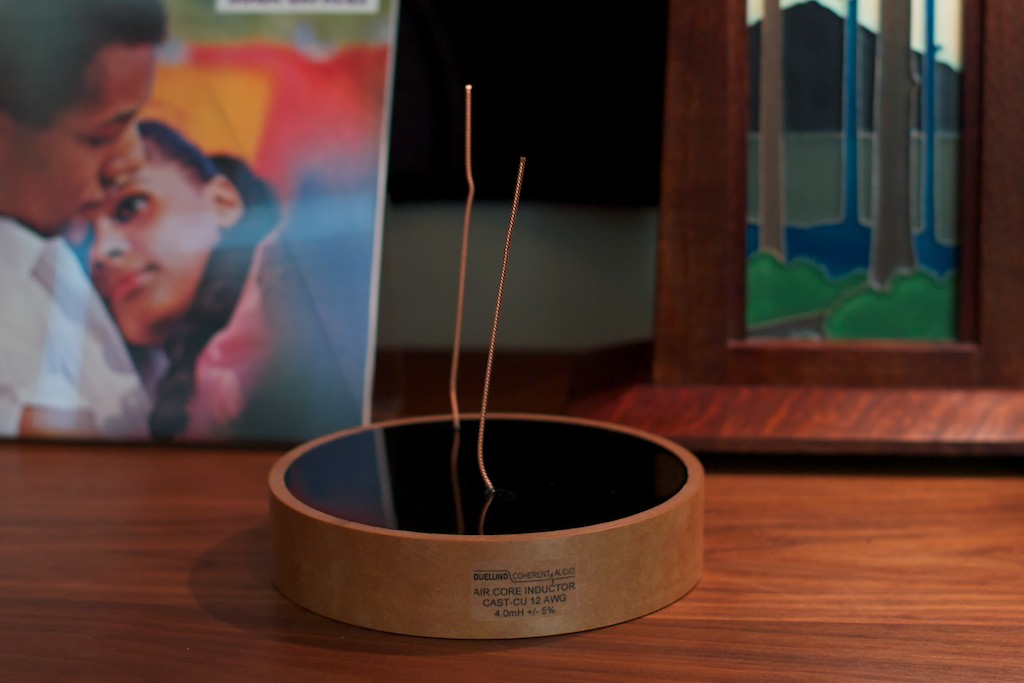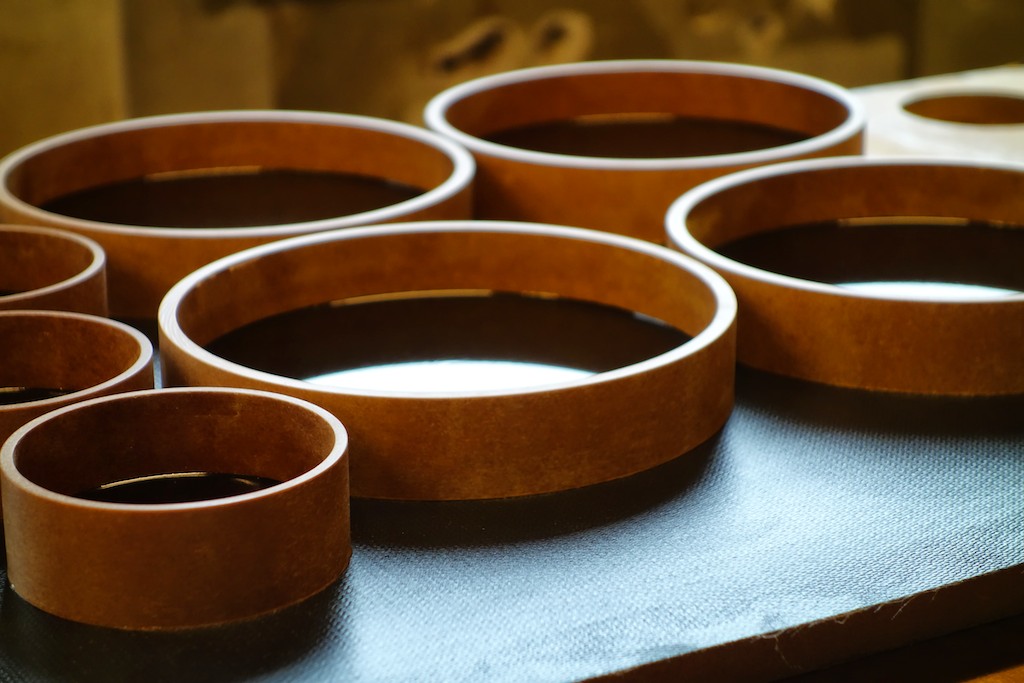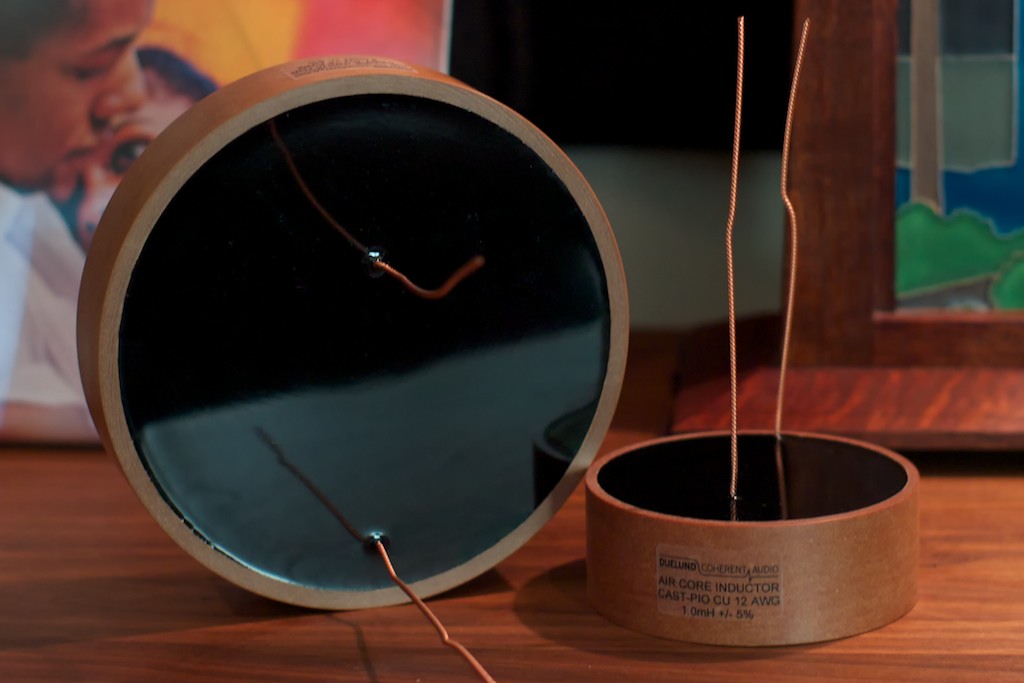In my last post I described all of the attention to detail that goes into producing the hand-made & labor intensive Duelund CAST capacitors, and in this post I want to tell you about the Duelund CAST Air Core Inductor that we will be using in the Duelund-Westminster Project as shown in positions L1 and L2 below.
An inductor (also called a choke) is a passive device that stores energy in its magnetic field (a capacitor stores energy in its electric field). The Duelund CAST Air Core Inductor - as the name implies - utilizes an air core that pure annealed soft copper foil in natural paper and oil is wrapped around (instead of around a magnetic core as with many inductors). A capacitor is made using two foils with paper between the foils, which results in capacitance being created in the electric field between them. An inductor is one foil coiled up. The 4.0 mH Duelund CAST Air Core Inductor that will be used in the L1 position of the WRSE low-frequency crossover is shown below.
The construction of the Duelund CAST Air Core Inductor is similar to the process used to make the Duelund CAST capacitors, where a foil of pure copper or silver are initially wound with paper around an air core to a certain value of inductance that is greater than the needed inductance. Then the coiled foil is put under vacuum pressure in an oil tank at high temperature for about a week to permeate everything with oil. Then the foil is coiled by hand in a humidity and temperature-controlled room to an exact inductance specification, and then it is placed back into the oil. Immediately after this the winding is sealed with a special lacquer that takes a week to cure. During this process a ring of vacuum impregnated paper has been readied with a base of CAST material.
The coiled foil is then heated and placed in the ring & base assembly and CAST material is poured on top of it in five stages. A precisely controlled flame is then quickly applied over the surface to drive any air bubbles out of the CAST material. Following this step the inductor is measured and checked against controls to ensure quality. The total production time is typically six to eight weeks to make an inductor.
In the photo below you can get an idea of the size of these inductors compared to the LP just behind them - they're huge! The 4.0 mH Duelund CAST Air Core Inductor (position L1 in the schematic above) is shown on the left sitting on end, and the 1.0 mH Duelund CAST Air Core Inductor (position L2 in the schematic above) is shown on the right.
Frederick told me, "As far as I know, the Duelund CAST air core inductors are the only paper in oil inductors commercially available to this day."
Frederik pointed out to me that many people mistakenly think inductors aren't as important as other circuit components because they typically deal with lower frequencies.
He said, "In fact it’s the total opposite, the lower registers are far more resonant in nature than high frequencies, which means resonance control becomes even more important. People are always slow to try the inductors, but when they eventually do, they are always amazed at the difference."
If you read the earlier post about Pambos & Theodoros results when they installed the Duelund CAST Air Core Inductors into Theodoros WRSE low-frequency crossover you know they were mightily impressed.
Thanks for stopping by!


































